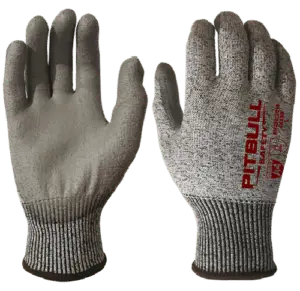
PU640 Cut-Resistant Glove – Product Datasheet
Product Description Feature Details Product Name PU640 Glove Type 13-gauge gray PU palm coated cut-resistant glove Materials Gray cut-resistant liner, gray PU palm coating Protection Level ANSI Cut Level A4, EN388 Level D Primary




